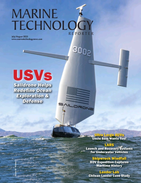NOAA Awards $2.1 Million for Ocean Exploration Projects
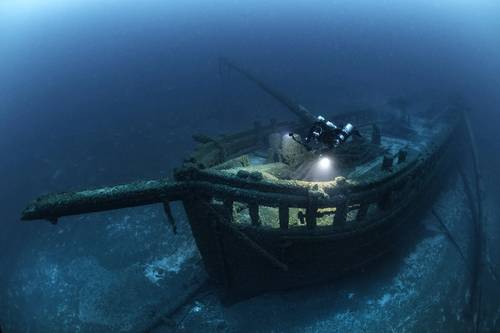
Canal schooner Walter B. Allen spent its career carrying grain and coal across the Great Lakes. In April 1880, it ran ashore on South Manitou Island in Lake Michigan during a gale and sank to the bottom of the lake during recovery efforts. Today, Walter B. Allen sits upright in 160 feet of water and is one of the shipwrecks that will be documented in detail during Exploring the Wisconsin Shipwreck Coast National Marine Sanctuary at Scale. Image courtesy of Becky Kagan Schott
NOAA Ocean Exploration selected four projects for financial support through its Ocean Exploration Fiscal Year 2024 (FY24) Funding Opportunity. Totaling over $2.1 million, the projects will explore the mesophotic coral ecosystems off the western coast of Puerto Rico, study the biodiversity of deep-pelagic crustaceans from the waters off Southern California, explore and document a collection of nationally significant shipwrecks in the deep waters of Lake Michigan’s Wisconsin Shipwreck Coast National Marine Sanctuary, and more.
NOAA Ocean Exploration explores the ocean to help us as a society better understand what lives and lies in its great depths and how it supports and affects life on Earth. One of the tools used to do this is an annual competitive grant program.
For the FY24 competition, NOAA invited proposals for projects under the themes of ocean exploration and discovery, maritime heritage, and technology that support national priorities, including the Strategic Priorities for Ocean Exploration and Characterization of the United States Exclusive Economic Zone and NOAA’s science and technology priorities.
Three of the supported projects are described below , and NOAA said the fourth will be announced a a later date.
Characterizing Mesophotic Fish Assemblages of Puerto Rico’s Western EEZ - (Principal Investigator: Richard R. Coleman, University of Miami)
Mesophotic (“middle light”) coral ecosystems provide habitat for an array of vulnerable and ecologically and commercially important fish species. At ocean depths between the brightly lit shallows and the dark deep ocean (30-150 meters/98-492 feet) in tropical and subtropical regions, these ecosystems are difficult to access, meaning they’re relatively unexplored, and our knowledge about the fish that inhabit them is limited. Using advanced deep-diving techniques and data collection methods, this research team will explore the mesophotic coral ecosystems off the western coast of Puerto Rico to better understand these ecosystems and how they are used as habitat by their associated fish communities. Technical divers will conduct complementary stereo-video and visual surveys to document fish occurrence, size, and abundance as well as evidence of marine debris, bleaching, disease, and other threats. They’ll also collect samples of select uncommon, rare, and unknown species for further study and water samples for eDNA analysis. The results of this project will inform the conservation and management of Puerto Rico’s mesophotic coral ecosystems and the fish communities they support and serve as a baseline against which to assess future changes.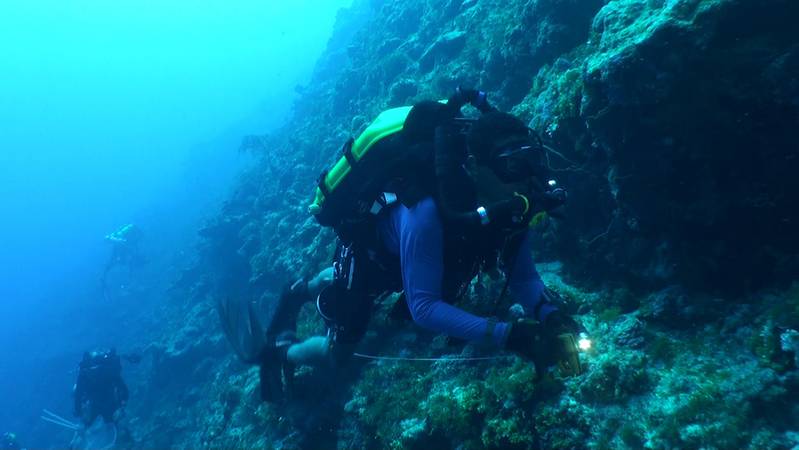 Closed-circuit rebreather (CCR) technology will allow this research team to access unexplored mesophotic reefs and characterize reef fish communities and habitat of western Puerto Rico. Here, Richard Coleman, the project’s principal investigator, is using CCR technology to survey fish communities on the island of Pohnpei, Federated States of Micronesia. Image courtesy of Richard PyleExploration and Characterization of Deep-Pelagic Crustacean Diversity in the Southern California Exclusive Economic Zone - (Principal Investigator: C. Anela Choy, Scripps Institution of Oceanography)
Closed-circuit rebreather (CCR) technology will allow this research team to access unexplored mesophotic reefs and characterize reef fish communities and habitat of western Puerto Rico. Here, Richard Coleman, the project’s principal investigator, is using CCR technology to survey fish communities on the island of Pohnpei, Federated States of Micronesia. Image courtesy of Richard PyleExploration and Characterization of Deep-Pelagic Crustacean Diversity in the Southern California Exclusive Economic Zone - (Principal Investigator: C. Anela Choy, Scripps Institution of Oceanography)
The deep ocean is the largest living space on Earth, and the deep-pelagic (or water column) species that live there are important food sources for marine predators, including ecologically, culturally, commercially, and recreationally important species. Scientists have much to learn about the biodiversity and ecology of deep-pelagic crustaceans and their associated communities. During this lab-based project, the research team will study the biodiversity of crustaceans collected from the deep waters off Southern California, with a focus on three orders of dominant crustaceans (Decapoda, Lophograstrida, and Mysida). Specifically, they will identify — or document and describe if unknown — recently collected crustaceans from five sites based on their morphology (form and structure). These identifications will be complemented with DNA studies. Using this information, they will characterize crustacean community composition in the study area. Upon completion of their research, they will deposit the samples and the associated genetic material and data in national collections and databases and produce a pictorial guide of deep-pelagic crustaceans. This work will support future water column exploration, research, and monitoring throughout the ocean to help us better understand the value and services of our natural marine resources and inform their sustainable management and use.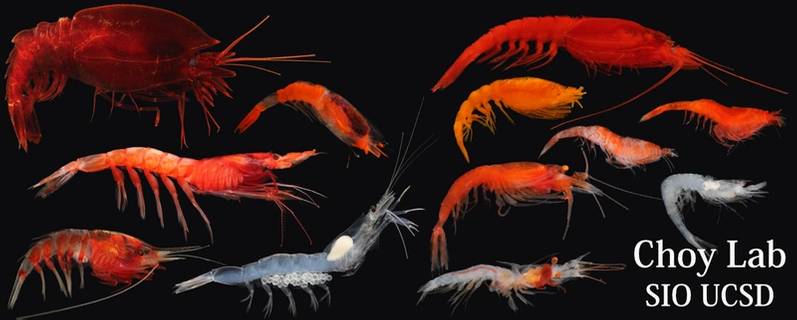 A diversity of deep-pelagic crustaceans from the waters off Southern California will be examined during this project. Shown here: five decapod crustaceans (left side), four lophogastrid crustaceans (upper right), and three mysids (lower right). Image courtesy of Choy Lab at Scripps Institution of OceanographyExploring the Wisconsin Shipwreck Coast National Marine Sanctuary at Scale - (Principal Investigator: Russ Green, Wisconsin Shipwreck Coast National Marine Sanctuary)
A diversity of deep-pelagic crustaceans from the waters off Southern California will be examined during this project. Shown here: five decapod crustaceans (left side), four lophogastrid crustaceans (upper right), and three mysids (lower right). Image courtesy of Choy Lab at Scripps Institution of OceanographyExploring the Wisconsin Shipwreck Coast National Marine Sanctuary at Scale - (Principal Investigator: Russ Green, Wisconsin Shipwreck Coast National Marine Sanctuary)
Well preserved by cold freshwater, the Great Lakes possess some of the most extraordinary potential for archaeological investigation of historic shipwrecks anywhere in the world. Many of these shipwrecks have yet to be discovered or explored. This research team will explore and document a collection of nationally significant shipwrecks — five recently located but not yet documented — in the deep waters (130-480 feet) of Lake Michigan’s Wisconsin Shipwreck Coast National Marine Sanctuary. They will use a hybrid autonomous underwater vehicle/remotely operated vehicle (AUV/ROV) equipped with novel acoustic, imaging, and laser scanning sensors, and develop new archaeological methods to capitalize on the efficiencies of autonomous and uncrewed vehicles. This project will produce baseline data and information — including still and video imagery and photogrammetric and laser-scan models — that will inform the sanctuary’s monitoring and preservation efforts and contribute to the understanding of the role of the Great Lakes in our nation’s maritime heritage.




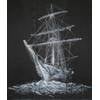
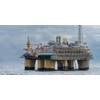
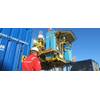






 August 2025
August 2025


